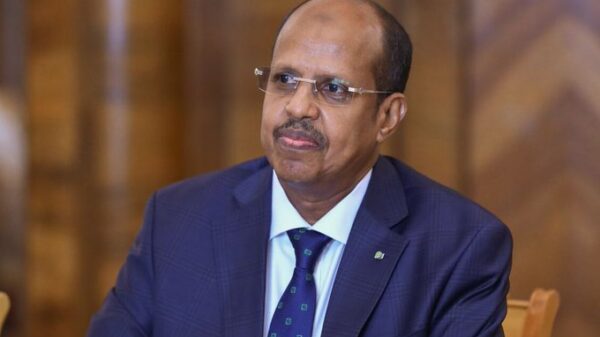DHAKA, Feb 27 – Bangladesh security forces arrested nearly 200 border troops Friday in a nationwide manhunt for mutineers who staged a bloody two-day revolt that turned the capital into a battle zone.
The fate of more than 130 army officers taken hostage by the mutineering guards remained unclear, however, after the rank-and-file troops surrendered and returned to barracks late Thursday.
Police have put the official death toll at 22, with dozens more injured – but that figure could go up significantly. Some bodies of murdered officers have been pulled from sewers and manholes.
"We have arrested nearly 200 Bangladesh Rifles (BDR) troops who fled their barracks in civilian dress. We were given orders to arrest the fleeing mutineers," a spokesman for the elite Rapid Action Battalion, Commander Abul Kalam Azad, told AFP.
He said checkpoints had been set up at all routes leading out of the capital Dhaka and surrounding the BDR barracks with four suspected mutineers arrested in northern city of Bogra.
"We are searching buses and trucks for any other rebel troops," he added.
The BDR guards, who were demanding better pay and conditions, surrendered after Prime Minister Sheikh Hasina warned they were on a "suicidal" path that could end only in bloodshed.
The premier visited some of the victims – both military personnel and their families – in hospital Friday.
As calm returned Friday to Dhaka, one regular army officer held hostage by the guards told AFP of his escape as his captors opened fire indiscriminately.
"It was cold-blooded murder," Syed M. Kamruzzaman said, adding that BDR chief Major General Shakil Ahmed was gunned down in front of him. Officials would not confirm Ahmed’s death.
"They hurled abuse at us and gunned down whoever they wanted. I was shot at seven times and was lucky to get out alive."
Major Jashim, leading a search team inside the BDR compound, said only 31 of the 168 officers in the cantonment when the incident began had been accounted for.
"We’re combing sewers and drains for the missing 137," he said.
One minister earlier said 50 officers may have been killed.
Tensions in the BDR had been simmering for months but erupted into violence early Wednesday when senior officers rejected appeals for more pay, subsidised food and holidays.
It then petered out, however, after Sheikh Hasina – who took office only two months ago, although she had served as premier once before – appeared on national television and threatened to put down the mutiny by force.
The violence was the first major crisis she has faced since her landslide election victory ended two years of army-backed rule.
She had offered the mutineers an amnesty and also promised to address complaints over low pay and working conditions.
Manzoor Hasan, the director of BRAC University’s Institute of Governance Studies in Dhaka, told AFP there were a "few worrying hours" where the prime minister appeared to be losing control.
"It was a bit of a baptism by fire for her. It was a critical test, but I think in the end she tackled it competently," he said.
The revolt has highlighted the frustrations felt by many in impoverished Bangladesh, which has been hit by high food prices, a slowing economy and rampant corruption.
Bangladesh has had a history of political violence, coups and counter-coups since winning independence from Pakistan in 1971.
It was run by a military dictator from 1982 to 1990, before democracy was restored in 1991. Then, in January 2007, the army again stepped in, cancelled elections and declared a state of emergency after months of political unrest.











































